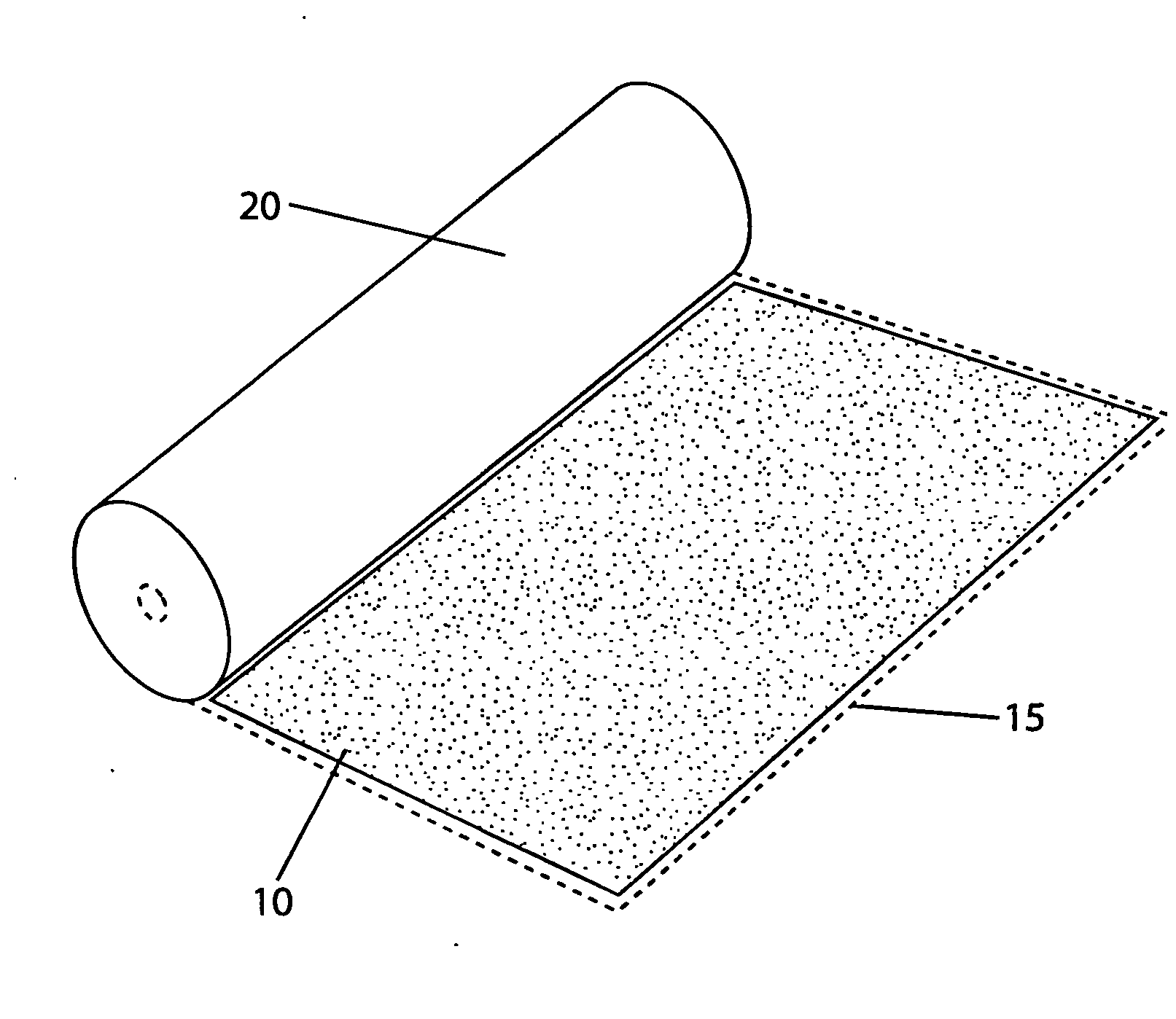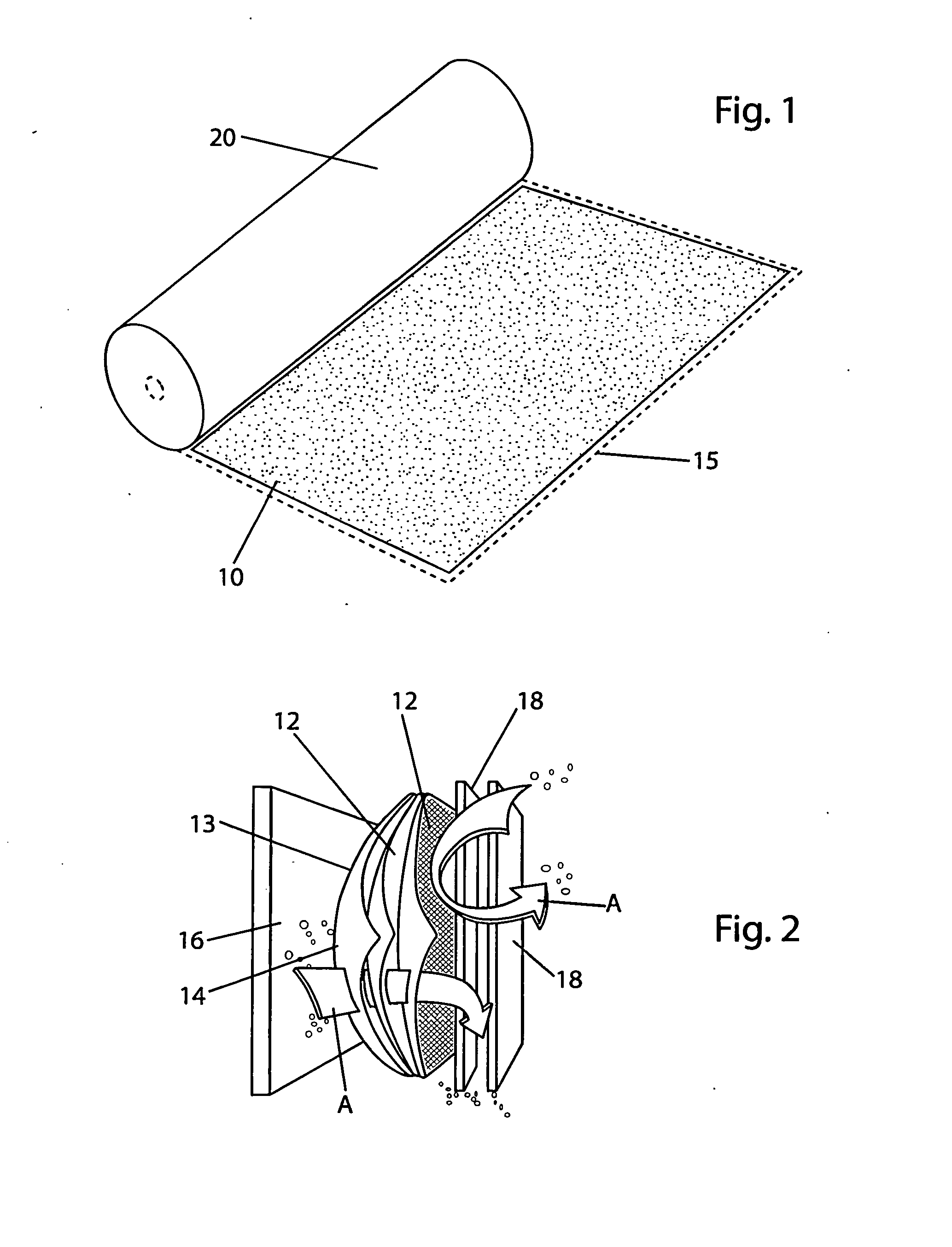Building membrane with porous pressure sensitive adhesive
a technology of building membranes and adhesives, applied in the direction of film/foil adhesives, synthetic resin layered products, packaging, etc., can solve the problems of toxic mold claims of over $3 billion dollars, poor indoor air quality, and deterioration of the structure,
- Summary
- Abstract
- Description
- Claims
- Application Information
AI Technical Summary
Benefits of technology
Problems solved by technology
Method used
Image
Examples
Embodiment Construction
[0018]The preferred embodiment and best mode of the invention is shown in FIGS. 1-4.
[0019]A building construction envelope or laminate membrane 10 is constructed of multilayer sheets 12 of spun bonded porous polypropylene secured to a liner 13 having a layer of porous pressure sensitive adhesive 14 coated over the entire surface. The adhesive surface is covered by a removable film cover 15. When the film cover is removed, the membrane is mounted to a wall board 16 or roofing material. Cladding 18 in the form of one or more sheets of material is fastened over the outer surface of membrane 10 as shown in FIG. 2. Air and vapor flow is shown by Arrows A.
[0020]Each sheet 12 is constructed of non-woven polypropylene fibers and the sheets are secured together to form a laminate. The membrane 10 is produced as a roll of sheet material 20, preferably 164 feet in length and with a width of 58-60 inches. The membrane 10 is water resistant with air permeability and has a water vapor transmissio...
PUM
| Property | Measurement | Unit |
|---|---|---|
| Temperature | aaaaa | aaaaa |
| Length | aaaaa | aaaaa |
| Length | aaaaa | aaaaa |
Abstract
Description
Claims
Application Information
 Login to View More
Login to View More - R&D
- Intellectual Property
- Life Sciences
- Materials
- Tech Scout
- Unparalleled Data Quality
- Higher Quality Content
- 60% Fewer Hallucinations
Browse by: Latest US Patents, China's latest patents, Technical Efficacy Thesaurus, Application Domain, Technology Topic, Popular Technical Reports.
© 2025 PatSnap. All rights reserved.Legal|Privacy policy|Modern Slavery Act Transparency Statement|Sitemap|About US| Contact US: help@patsnap.com



